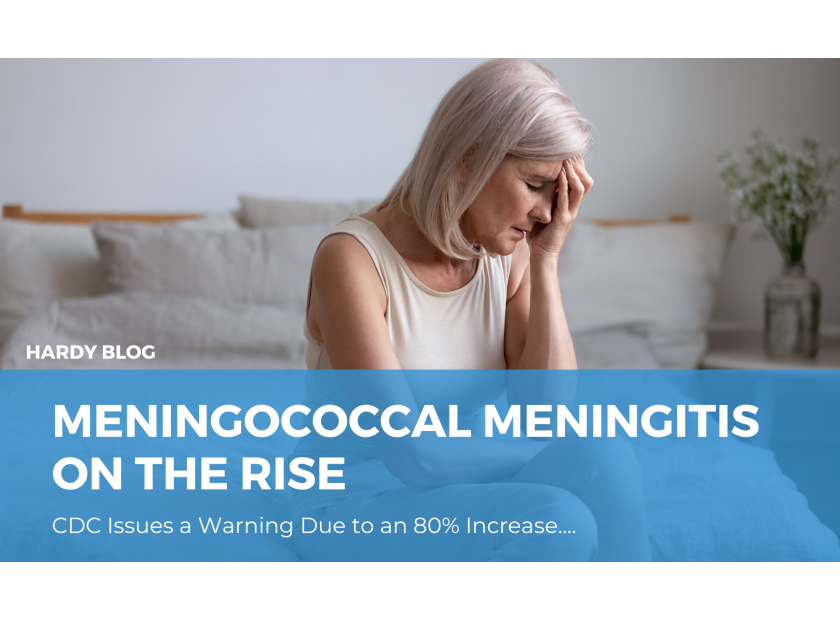Health & Wellness
-
Posted: December 23, 2024Read More
Small Intestinal Bacterial Overgrowth (SIBO) occurs when excessive bacteria populate the small intestine, leading to digestive issues like bloating, diarrhea, and nutrient malabsorption. Our latest blog post delves into SIBO's causes, symptoms, and diagnostic methods, providing valuable insights for those seeking to understand this condition.
Learn more about SIBO and its impact on digestive...
-
Posted: November 26, 2024Read More
The cold and flu season is upon us.
Flu season tends to peak in the winter months, between December and February, according to the Centers for Disease Control and Prevention. If you have not stocked up yet on necessary testing supplies for your laboratory, we are listing a few key...
-
Posted: October 14, 2024Read More
Recent studies have shown that many tattoo inks contain dangerous chemicals and potentially infectious bacteria. Despite their cultural popularity and potential hazards, the U. S. Food and Drug Administration (FDA) does not regulate the tattoo industry. The FDA considers tattoos and permanent makeup as cosmetics, so they do not regulate inks used for the purpose of injection into skin; they do not...
-
Posted: October 08, 2024Read More
Carbapenem-resistant Enterobacterales (CRE) refers to a group of bacteria within the Enterobacterales order that have developed resistance to carbapenem antibiotics. Carbapenems are a class of broad-spectrum antibiotics used as a last-resort treatment for serious infections caused by multi-drug-resistant bacteria.
... -
Posted: October 07, 2024Read More
Dengue cases in the Americas surged threefold in the first three months of this year compared to the same period last year, according to the Pan American Health Organization (PAHO). Brazil, Argentina, and Paraguay are the most severely affected countries. PAHO officials warn that this outbreak has the potential to be the worst the Americas have faced to date.1
... -
Posted: September 12, 2024Comments: 1Read More
Globally, millions of individuals are affected by UTIs each year, of which, a portion of these cases may be caused by consuming ExPEC from food reservoirs. Additional studies are necessary to clarify the relationship between UTI risk and the presence of ExPECs in food reservoirs. It is important for researchers to identify the level of risk ExPECs pose to human health...
-
Posted: September 09, 2024Read More
The birthrate in the United States has hit a new record low, according to an analysis of 2023 birth certificate data published this past spring by the Centers for Disease Control and Prevention (CDC). Last year’s slowdown marks an end to the uptick in new babies that began during...
-
Posted: August 12, 2024Read More
A primary objective in the development of vaccines and therapeutics is to stimulate the body to produce antibodies that block pathogen entry into cells and tissues. Vaccines emulate infections by presenting an antigen to our immune system. This antigen may be a weakened or inactivated virus or bacteria, components of their outer surface, or genetic material. As part of the adaptive immune response...
-
Posted: July 15, 2024Read More
For a human pathogen with no known environmental reservoir, Mycobacterium tuberculosis has honed the art of survival and has persisted in human communities from antiquity through modern times. Tuberculosis is a preventable and treatable infectious disease. Having said that, it is still one of the major contributors to morbidity and mortality in developing countries where there is less-than-adequate...
-
Posted: July 01, 2024Read More
We’re all familiar with this ever-present dichotomy. Antibiotics are life-saving, until they’re not; until the delicate balance shifts, causing the oh-so-inevitable resistance. While antibiotic stewardship programs are becoming more and more prevalent, what does one do when working with a patient with a chronic condition in which daily, long-term antimicrobial treatment is the norm? How do we address...
-
Posted: June 24, 2024Read More
In a large genetic analysis study, individuals with genetic risk factors, such as family history of colorectal cancer (CRC), who have experienced early-life antibiotic use on a long term basis, demonstrated an increased risk of early-onset CRC. It was determined that individuals with a high polygenic risk score (genetic predisposition to a particular disease) were at higher risk of early-onset CRC...
-
Posted: April 10, 2024Read More
The CDC is alerting doctors to be on the lookout for certain types of rare, serious meningococcal infections that are on the rise in the United States.
This alarming increase is caused by Neisseria meningitidis bacteria, which has caused 1 in 6 people to die, a higher fatality rate than they typically see with meningococcal infections.
These cases are also unusual because they...
-
Posted: April 03, 2024Read More
The Centers for Disease Control and Prevention (CDC) recently released its 2022 Sexually Transmitted Infections (STI) Surveillance Report providing U.S. data for nationally notifiable STI’s for federally funded control programs.
According...
-
Posted: March 14, 2024Read More
As hundreds of thousands of patients come face-to-face with health issues related to antibiotic-resistant infections, the scientific community must address the significance of antimicrobial stewardship and its core principles....
-
Posted: February 26, 2024Comments: 1Read More
Glyphosate, a chemical used in many RoundUp® herbicides, may be to blame for the rise in cases of celiac disease and gluten intolerance. Though the proponents of glyphosate have always maintained that it has no effect on human or animal cells, an ever-increasing amount of research suggests that the herbicide may suppress healthy gastrointestinal flora, including microbes needed to properly digest gluten...





















